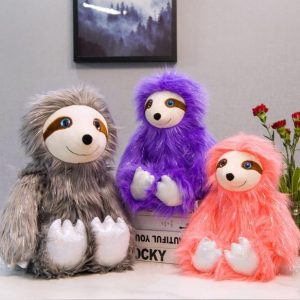1. Ancient Origins: The origins of soft toys can be traced back to ancient civilizations. Archaeological evidence suggests that children in ancient Egypt, Greece, and Rome played with soft dolls and stuffed animals made from fabric and other soft materials. These early soft toys were often handmade and served as simple playthings for children.
2. Middle Ages: During the Middle Ages, soft toys continued to be made by hand and were typically crafted by skilled artisans. These toys were often made for children from wealthier families and were more intricately designed and decorated.
3. Renaissance and Early Modern Era: As craftsmanship and trade routes expanded during the Renaissance and Early Modern Era, soft toys became more accessible to a wider range of people. Trade enabled the exchange of different materials, fabrics, and designs, leading to the proliferation of soft toys across different regions.
4. 19th Century: Industrial Revolution and Teddy Bear’s Invention: The Industrial Revolution in the 18th and 19th centuries played a significant role in the mass production of soft toys. Advances in textile manufacturing and sewing machines made it easier and more affordable to produce these toys in larger quantities.
The most iconic milestone in the history of soft toys during this period was the invention of the Teddy Bear. In 1902, the “Teddy Bear” was inspired by an incident involving U.S. President Theodore Roosevelt, who refused to shoot a bear cub during a hunting trip. The incident led to the creation of the cuddly Teddy Bear, which quickly became a global sensation and a symbol of comfort and companionship.
5. 20th Century and Beyond: In the 20th century, soft toys continued to evolve with advancements in materials and manufacturing techniques. New synthetic materials, like polyester fibers, made soft toys softer, more durable, and easier to clean.
As the century progressed, licensed characters from movies, cartoons, and books started to appear as soft toys, gaining popularity among children and collectors alike. The rise of technology also brought interactive soft toys with features like voice recognition and movement, providing a new dimension of engagement for children.
Additionally, safety regulations and standards for children’s toys became more stringent, ensuring that soft toys were made with non-toxic materials and designed with child safety in mind.
Modern Era: In the modern era, soft toys have continued to be cherished by people of all ages. They remain popular as gifts, collectibles, and sentimental mementos, carrying the same magic of comfort and companionship that they have for centuries.
In conclusion, the history of soft toys is a story of human creativity, craftsmanship, and the enduring appeal of these cuddly companions throughout different periods of history. From simple handcrafted dolls to technologically advanced plush toys, soft toys have captured the hearts of people worldwide and continue to hold a special place in our lives.








